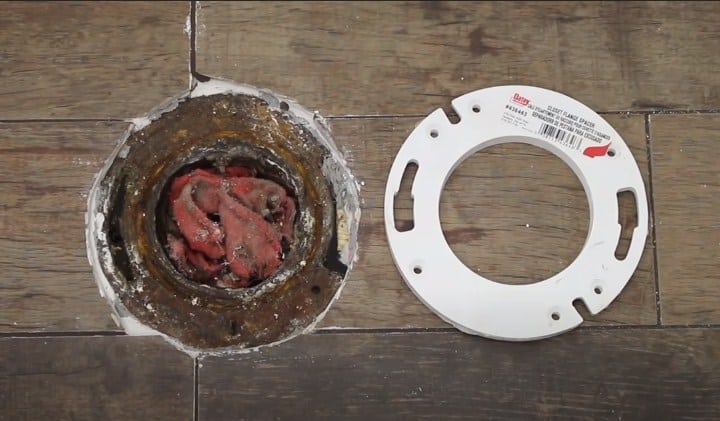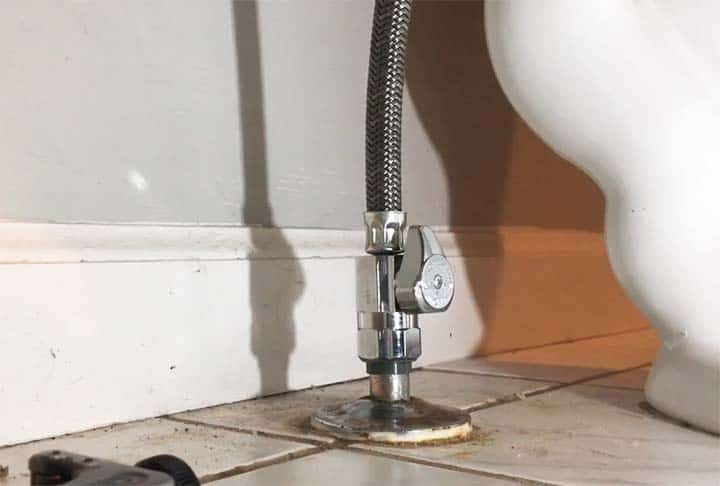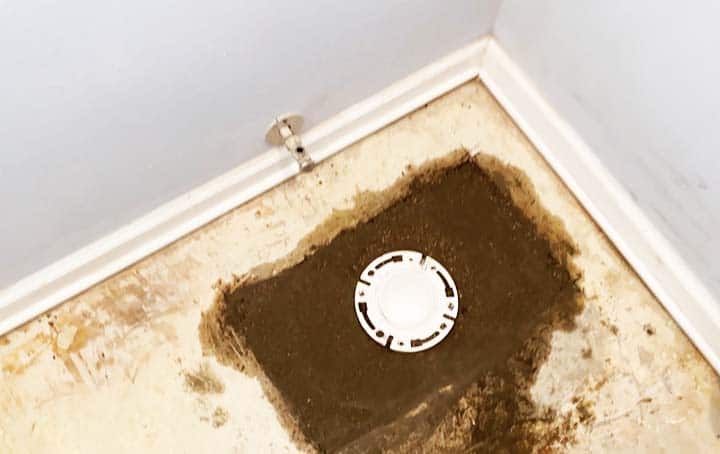With the help of a step-by-step guide, you should be able to replace or install a new toilet flange by yourself. One of the popular questions about toilet flange is; does a toilet flange need to be screwed to the floor?
Yes, it is essential to screw your toilet flange to the floor. It helps to create a good seal between the flange and the toilet. Some people may use epoxy or adhesive to hold toilet flange to the floor, but that is not the proper way to secure a toilet flange.
Toilet flange that is not installed correctly may damage your floor, toilet, or drainpipe. Study this article carefully to learn how to install a new flange properly.
What is a Toilet Flange?
The primary function of the toilet flange is to connect the drainage system in your home to the toilet drain, and another name for a toilet flange is a closet flange. Aside from that, the flange is a stabilized floor where the toilet is mounted. Toilet flanges are made from copper, brass, PVC, or steel pipe, and they are paired with plastic or metal ring that screw it to the floor. It is essential to screw the toilet flange to the floor; else, you will have a toilet that rocks or shifts.
Toilet flanges come in two different sizes, 3 or 4 inches in diameter, so you need to choose the size compatible with the drain pipe. Using the wrong closet flange is one of the causes of flushing leaks.
Should Toilet Flange Be Screwed to the Floor?
One of the questions that you need to answer before installing a new toilet flange is; should the toilet flange be screwed to the floor.
Yes, it is essential to screw the toilet flange to the floor because it helps create a good seal between the flange and the toilet. To avoid a toilet that shifts, you must also screw your screw toilet flange to the floor.
How to Install a New Toilet Flange?
To install your flange correctly, you need to get the right materials/tools/equipment. The things you will need for this project are listed below:
- Toilet Flange
- Wax Ring
- Screws & Bolts
- Cooling Oil
- Drill
- Drill Bits
- Screwdriver
- PVC Primer & Glue
- Putty Knife
- Toilet Flange Spacer
- Silicone Caulk
Screw the toilet flange to the Floor
Now that you have gathered all the materials, tools, and equipment needed to install the flange properly, you can now proceed with the installation process. Follow the steps below to replace old toilet flange with a new one:
- The first thing you need to do is use a putty knife to remove the wax from the bottom of your toilet.
- After that, you will remove the old flange. Removing the old flange from the drain pipe may be pretty tricky because it has been glued to the drain pipe. Ensure that you remove the old flange carefully so you don’t damage the drainpipe.
- Clean the surfaces of the drain pipe and the new flange. After cleaning the surfaces, you will apply the PVC Primer and glue to the cleaned surfaces.
- Then insert the toilet flange into the drainpipe until the flange sits on the finished surface or the sub-floor. If the flange sits on the sub-floor, you will have to put the toilet flange spacer and use the silicone caulk to cover the bottom of the spacer.
- If the closet flange sits directly on a wooden floor, you will screw the flange or/and flange spacer into the floor with the recommended screws.
- If the flange or flange spacer is sitting on a concrete floor or a tiled floor, you will screw the flange/flange spacer to the existing holes using the Tapcon screws or any other screws. If there are no existing holes, you will drill new holes using your drill. It would be best to be careful when using the drill to avoiddamaging the drainpipe.
- Once you have screwed the flange to the floor, you will put the wax ring and attach your toilet to the flange.
Things to consider when securing the toilet flange to the floor
- Make sure you use all the pre-drilled holes on the flange when securing it to the floor
- Select a high-quality toilet flange that will last for an extended period.
- Ensure that the flange/flange spacer sits directly on the finished floor. It must not go below the level of the finished floor.
- Do not secure your closet flange to the floor using epoxy or adhesive; it is dangerous.
Frequently Asked Questions (FAQs)
- Can I secure my toilet flange to the floor with epoxy or adhesive?
It is not good to secure the toilet to the floor using epoxy or adhesive. It may damage the toilet, the drainpipe, or lead to other serious problems.
- What is the best way to secure a toilet flange to the floor?
The best way to secure a toilet flange to the floor is by using screws or bolts.
- When do I need to use the toilet flange spacer?
The toilet flange spacer is used if the toilet flange sits on the sub-floor.
- Why do you need to use all the pre-drilled holes on the toilet flange?
To secure the flange firmly to the floor and avoid a toilet that rocks or shifts, you must use all the pre-drilled holes.
Conclusion
One of the questions that many people ask whenever they want to install a new toilet flange is; does a toilet flange needs to be screwed to the floor.
Some people may use adhesive or epoxy to secure toilet flange to the floor, but that method is not safe. It may cause severe damage to the drainpipe, the toilet, or the toilet floor. The best and safest way to secure a toilet flange to the floor is by using screws or bolts.
Continue reading this article to learn the basic things you need to know about a toilet flange.
I am James Martin, An professional plumber with more than 16 years of experience. The main purpose of my writing is to share my experiences of helping others. Be with me and explore bathroom plumbing, installation, cleanness ideas, and many more.




